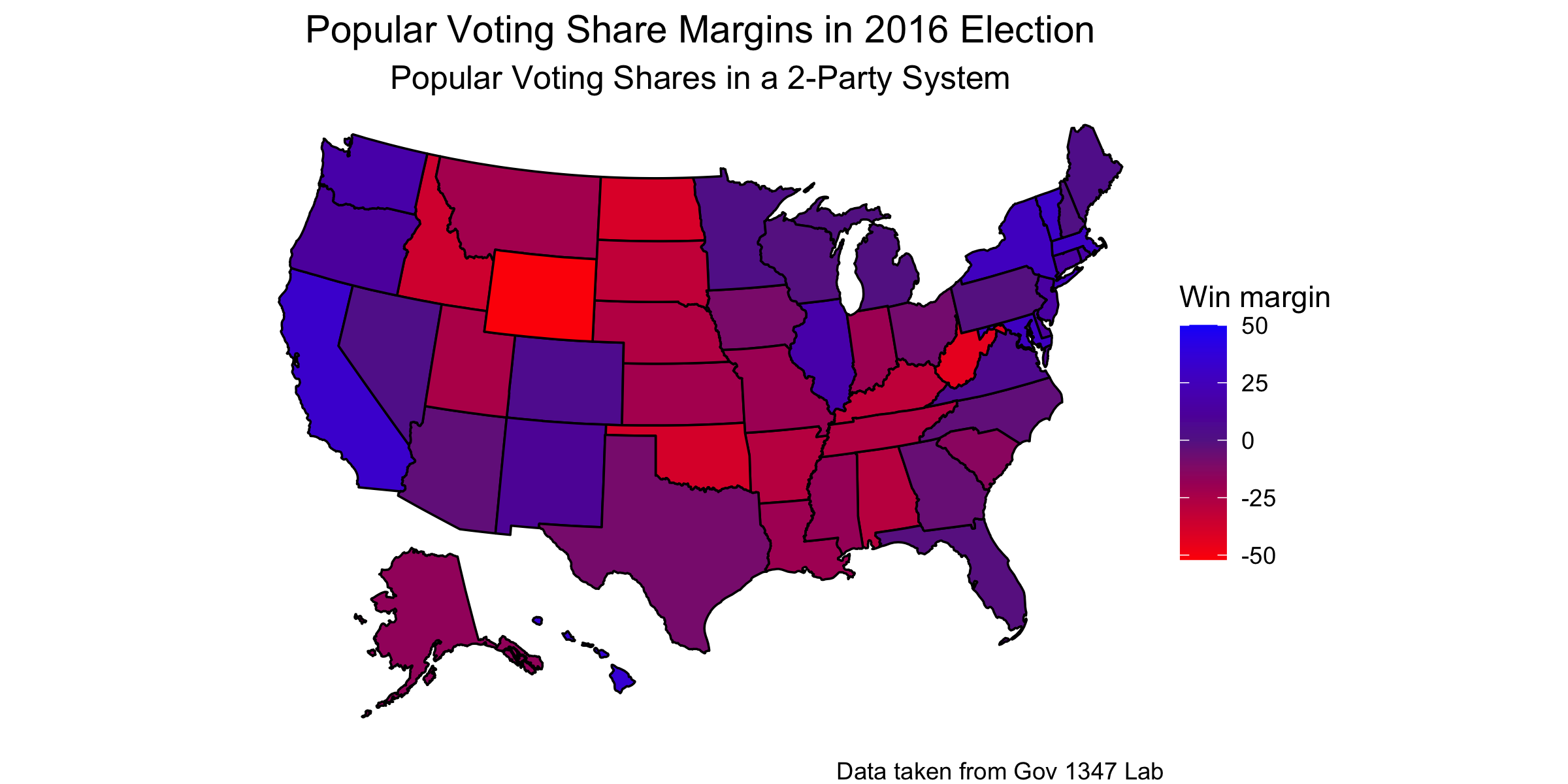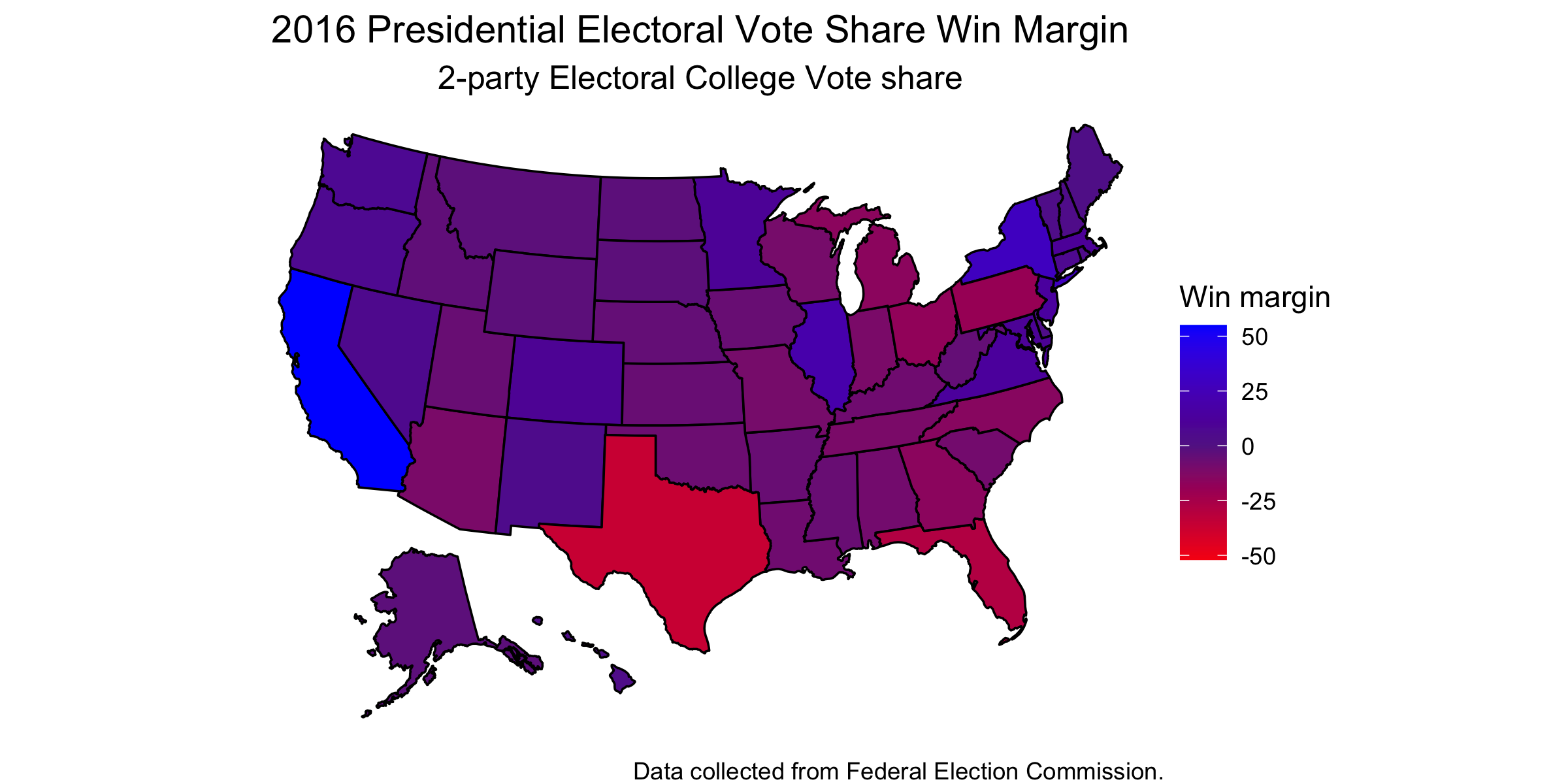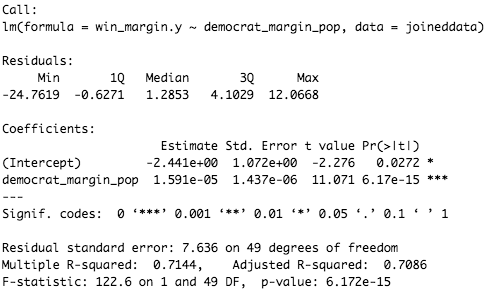2020 Presidential Elections Analysis
Tahmid Ahmed
9/13 - Does the Electoral College Hurt Democrats?
The 2016 Election stood out mainly because it was one of the few cases where a candidate who lost the popular vote won the electoral college, thus winning the presidential bid. In all cases that this occurred, this only happened to Republican candidates with the exception of John Quncy Adams, who was a Democratic-Republican. However, since we are focused more heavily on modern presidential elections, we will keep this list as unianmously republican. This thus begs the question is the electoral college a detriment to the Democratic Party, especially in today’s society and the future?
To first answer this question, let’s look at the patterns of the 2016 election. Below is a figure representing the popular voting margins among both democratic and republican parties. The more blue the state is, the more democratic it voted in terms of popular vote and the same holds true for the republican party where state are red instead. States that are very much in the middle are closer to a shade of purple.

As we can see, much of America is actually quite purple, meaning swing states. According to FiveThirtyEight, about 25% of America is quite actually encompasses swing states. These states include Colorado, Florida, Iowa, Michigan, Minnesota, Nevada, New Hampshire, North Carolina, Ohio, Pennsylvania, Virginia, and Wisconsin as “perennial” swing states. What’s interesting to note here, however is that states that are more blue tend to be metropolitan areas like California and New York, whereas states that are more red tend to be rural areas like Wyoming and Idaho. States like California and New York have about 25% more democratic voters, whereas states like Wyoming and Idaho also have about 25% more republican voters than the other party.
If we compare the popular voting margins to the elecotral college voting margins, the difference is quite noticeable. While the electoral college is a very binary way of looking at things, the map below demonstrates something very important, however. It demonstrates the somewhat consistency of the number of electoral votes on a state by state basis, given the large amount of purple seen.

One thing to note is that since electoral college depends on the population of each state, it seems to be consistent in number through most of middle America. What’s interesting to note is that states with the highest population and thus most electoral votes tend to be states on the border, such as California, Florida and Texas. According to the United Nations, a possible reason for this that there are superior economic benefit in coastal areas due to the expansion of fisheries, tourism, human settlements, and access to ocean navigation.
Now that we see the patterns of both margins for the popular vote and elecoral college, let’s analyze how these patterns are related. One way to do this is to run a regression between both types of margins. Below is a regression plot of how popular voting margins and elecoral college margins are related.

From our regression, we can see a positive correlation between both margins. Furthermore, while there outliers (New York and California), the regression is slightly positive. This makes sense condering there are only a few states that are overtly liberal. However, if we take a deeper look, specifically wehre the popular vote margin is close to zero, we can see that almost all those states were won by reublican. What this implies, however, is that democrats tend to lose states a good chunk of states to republicans despite scoring nearly as many voters. Essentially, democrats tend to lose more in tight races in states.
Another intersting thing to note here is that if we were to take a regression just from a negative popular vote margin to a popular margin close to zero, we can see that the electoral college share and popular voting share are less correlated. However, if we were to then take another regression just from a popular vote margin close to zero to an increasing posiitive margin, the regression appears to be a lot more correlated.

The summary of the regression can be seen above and we can see the popular voting margin is signficiant, so it appears that there is a singificant relationship between both voting margin types. However, given the reasons I gave in the previous paragraph, it does seem that the electoral college plays a somwehat disadvantage to the democratic party, which thus begs the question if there is a need for democratic reform in how elections are being done.